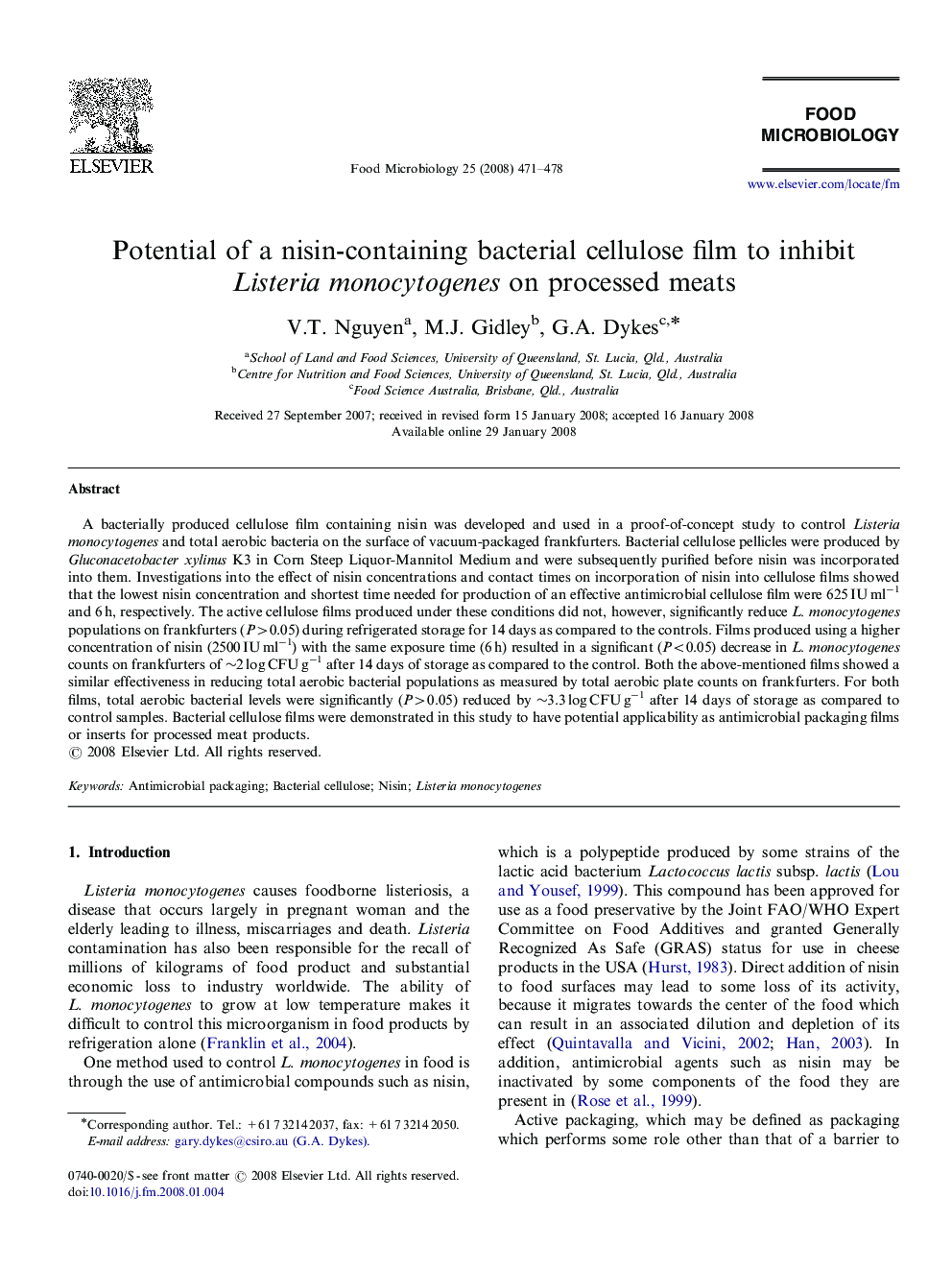| Article ID | Journal | Published Year | Pages | File Type |
|---|---|---|---|---|
| 4363722 | Food Microbiology | 2008 | 8 Pages |
A bacterially produced cellulose film containing nisin was developed and used in a proof-of-concept study to control Listeria monocytogenes and total aerobic bacteria on the surface of vacuum-packaged frankfurters. Bacterial cellulose pellicles were produced by Gluconacetobacter xylinus K3 in Corn Steep Liquor-Mannitol Medium and were subsequently purified before nisin was incorporated into them. Investigations into the effect of nisin concentrations and contact times on incorporation of nisin into cellulose films showed that the lowest nisin concentration and shortest time needed for production of an effective antimicrobial cellulose film were 625 IU ml−1 and 6 h, respectively. The active cellulose films produced under these conditions did not, however, significantly reduce L. monocytogenes populations on frankfurters (P>0.05) during refrigerated storage for 14 days as compared to the controls. Films produced using a higher concentration of nisin (2500 IU ml−1) with the same exposure time (6 h) resulted in a significant (P<0.05) decrease in L. monocytogenes counts on frankfurters of ∼2 log CFU g−1 after 14 days of storage as compared to the control. Both the above-mentioned films showed a similar effectiveness in reducing total aerobic bacterial populations as measured by total aerobic plate counts on frankfurters. For both films, total aerobic bacterial levels were significantly (P>0.05) reduced by ∼3.3 log CFU g−1 after 14 days of storage as compared to control samples. Bacterial cellulose films were demonstrated in this study to have potential applicability as antimicrobial packaging films or inserts for processed meat products.
